All Images
News Release 18-080
What makes a mammal a mammal? Our spine, say scientists
Study of fossil bones leads to new conclusions about spine's importance
This material is available primarily for archival purposes. Telephone numbers or other contact information may be out of date; please see current contact information at media contacts.
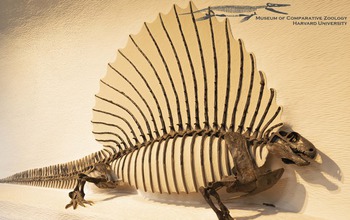
Reconstruction of Edaphosaurus, a primitive mammal ancestor; its long spines form a sail on its back.
Credit: Harvard University Museum of Comparative Zoology
Download the high-resolution JPG version of the image. (1.4 MB)
Use your mouse to right-click (Mac users may need to Ctrl-click) the link above and choose the option that will save the file or target to your computer.
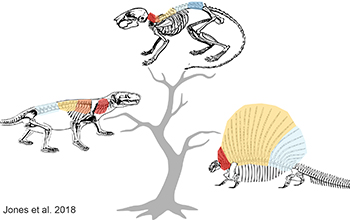
Phylogenetic tree showing mammal backbone evolution: Edaphosaurus, Thrinaxodon, today's mouse.
Credit: Harvard University Museum of Comparative Zoology
Download the high-resolution 2018_SCIENCE_SUMMARY THUMBNAIL version of the image. (498.9 KB)
Use your mouse to right-click (Mac users may need to Ctrl-click) the link above and choose the option that will save the file or target to your computer.
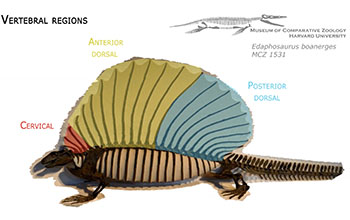
Edaphosaurus fossils came from late Carboniferous to early Permian times, 300-280 million years ago.
Credit: Harvard University Museum of Comparative Zoology
Download the high-resolution JPG version of the image. (194.0 KB)
Use your mouse to right-click (Mac users may need to Ctrl-click) the link above and choose the option that will save the file or target to your computer.
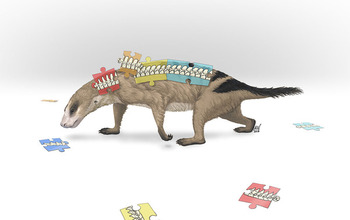
Reconstruction of Thrinaxodon; fossil bones came from the Early Triassic, 251-241 million years ago.
Credit: April Neander
Download the high-resolution JPG version of the image. (108.2 KB)
Use your mouse to right-click (Mac users may need to Ctrl-click) the link above and choose the option that will save the file or target to your computer.
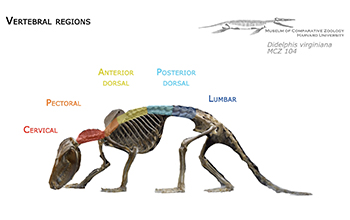
A modern-day opossum shows the addition of a fifth region in the backbone, the lumbar region.
Credit: Harvard University Museum of Comparative Zoology
Download the high-resolution JPG version of the image. (142.1 KB)
Use your mouse to right-click (Mac users may need to Ctrl-click) the link above and choose the option that will save the file or target to your computer.
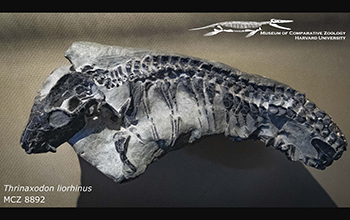
A fossil specimen of Thrinaxodon, on display in the Harvard Museum of Natural History.
Credit: Harvard University Museum of Comparative Zoology
Download the high-resolution JPG version of the image. (928.6 KB)
Use your mouse to right-click (Mac users may need to Ctrl-click) the link above and choose the option that will save the file or target to your computer.
